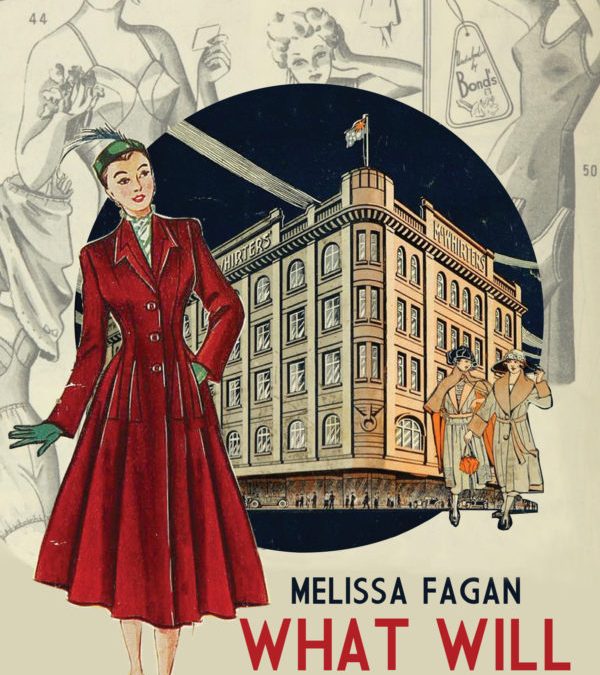Memoir is a slippery beast, necessarily reliant on the perspective of the one telling the story, and forged by memories and recollections that are individual and personal, and therefore by their very nature destined to be only one person’s account of a collective experience. In Melissa Fagan’s book What Will Be Worn (Transit Lounge 2018), she has delved deep into her own store of memories, she has interviewed or chatted with dozens of relatives and family friends, and she has combined these stories with painstaking research – everything from newspaper articles and wills to divorce court decrees, bills of sale and old correspondence. The result is a compelling and highly readable history of McWhirters, both the family – her family – and the famous department store in Fortitude Valley.
The McWhirters building is an iconic Brisbane landmark and for Fagan it is a touchstone throughout this book as she investigates her family’s heritage and history, her forebears’ foibles, failings, successes and triumphs, and weaves it all together into a fascinating exploration of their lives. She focuses particularly on the women – her mother, her grandmother, and those before them, and she describes their inextricable links with fashion, retail shopping, horse-racing and more, as she tries to trace the story of her beginnings. She explores the choices made, the financial and social decisions, the failures of family and of business, in her attempt to track backwards from her own life to her past. And while she reaches as far back as she can go – back to her Scottish ancestry – she continually intersperses these found facts with moments from her current life, and contemporary circumstances.
While the McWhirters building might now be a fading and crumbling star, and while Fagan has gathered much of her information from the dusty archives of years past, her story is not old-fashioned or fusty. It is a funny, engaging and moving story peopled with quirky characters who lead lives that could come straight out of a movie, or at least out of the social pages. In the foreword, she talks about her grandfather who gambled away his inheritance and her grandmother who had an affair; about wealth, fortunes and reputations made and lost. She attempts to piece together the patterns that run through this family, and she thinks carefully about the legacy that is left behind, not only the physical and historical legacy, but the emotional legacy – the complicated warp and weft of a family’s story. This is a brave book, because it digs deep, picking the scabs off old wounds and excoriating scar tissue to find out what lies beneath. It is brave because in it Fagan confronts not only her own prejudices and idiosyncrasies and uncertainties, but because she confronts the superficial narrative of her family story, the tale that has been held up as the truth, and she challenges that ‘truth’ to try to find out whether other – alternative – stories might also be true. She investigates ‘facts’ and discovers fabrication, she gently presses the façade of respectability and finds scandal and impropriety, she takes well-worn family lore and uses her investigative skills to get at the real story behind the story.
Writing memoir about family members who have died is hard enough, but encapsulating those who are still living – attempting to portray an honest tale whilst being respectful of other family members and their memories – is a very fine line upon which to balance. Fagan steps across this tightrope with care and sensitivity, always mindful of people’s feelings and (perhaps different) perspectives, but never allowing that to deter her from seeking the facts. Sometimes those facts are unpalatable, but Fagan doesn’t retreat behind distance or time – she wades right in, while constantly reminding herself – and us, the reader – of her inherent biases and emotional attachments. With one eye on the story, and one on the effect of the story, she gives us a complex appraisal of her history and of the effect that history has had on her own life story.
With the inclusion of personal photographs and quotes from the newspapers and retail catalogues of the time, this book is an intimate entrée to the social and business life of one of Queensland’s founding families. A tale of young love and committed relationships, of financial risk-taking and empire building, of fashion and frocks, of drunkenness and adultery, of gambling and excess, and of the wealth of those in high society, this story joins the past and the present, and demonstrates how the ties of family can continue to bind people together despite extraordinary odds. If you are interested in fashion trends, shopping giants, Brisbane history, or simply the remarkable whims of chance, this book will entertain and delight. And if, like many people, you have nostalgic memories of days spent in the famous McWhirters building, this book will satisfy your curiosity about its establishment.

